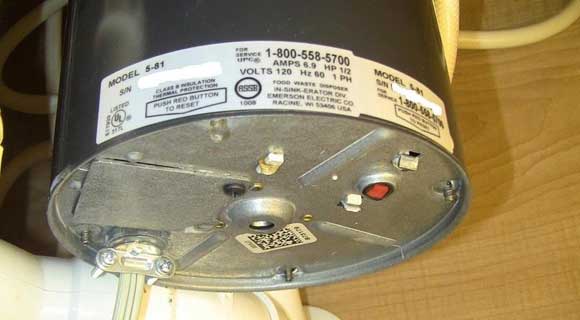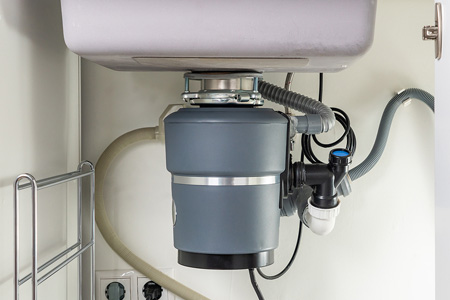Almost everyone has their unique theory on the subject of Garbage Disposal Leaking From Bottom.

Garbage disposals are vital kitchen area home appliances that aid in throwing away food waste successfully. Nonetheless, a leaking garbage disposal can be a discouraging and untidy issue to take care of. Thankfully, lots of leakages can be repaired easily with a couple of basic steps. In this write-up, we will talk about exactly how to deal with a dripping waste disposal unit properly.
Introduction
Garbage disposals are set up under cooking area sinks and are made to shred food waste right into smaller items, permitting it to pass through the pipes system quickly. While these tools are typically dependable, leakages can take place with time due to wear and tear, loose links, or damage to the system.
Common Causes of Leaks in Trash Disposals
Worn Seals and Gaskets
Seals and gaskets play an important role in avoiding water from dripping out of the waste disposal unit. Gradually, these elements can weaken, resulting in leaks around the disposal device.
Loose Connections
The links in between the waste disposal unit and the plumbing system can come to be loose gradually, causing water to leakage out during operation.
Cracks or Holes in the Disposal System
Physical damage to the garbage disposal, such as cracks or holes in the housing, can additionally result in leaks.
Recognizing the Resource of the Leak
Prior to trying to fix a dripping waste disposal unit, it is vital to recognize the source of the leakage. This can usually be done through visual assessment or by performing basic tests.
Visual Examination
Evaluate the garbage disposal system thoroughly for any kind of signs of water leakage. Pay close attention to locations around seals, gaskets, and connection points.
Checking for Leaks
One method to examine for leakages is by running water with the disposal unit and looking for any kind of visible signs of leakage.
Tools and Materials Needed for Fixing a Dripping Waste Disposal Unit
Prior to beginning the repair service process, collect the needed devices and materials, consisting of a screwdriver, flexible wrench, plumber's putty, substitute seals or gaskets, and epoxy or patching material for fixing cracks or openings.
Step-by-Step Overview to Fixing a Leaking Garbage Disposal
Turn Off the Power
Prior to trying any kind of repair work, make certain that the power to the garbage disposal device is switched off to avoid the threat of electrical shock.
Locate the Leak
Identify the specific area of the leakage and figure out the cause.
Tighten Links
Make use of a wrench to tighten up any type of loose links between the disposal system and the pipes system.
Replace Seals or Gaskets
If the leak results from used seals or gaskets, remove the old elements and change them with new ones.
Patching Fractures or Holes
For fractures or holes in the disposal unit, use epoxy or an appropriate patching material to seal the damaged location.
Evaluating the Waste Disposal Unit After Fixing
When the repair work is complete, evaluate the garbage disposal by running water via it to make sure that the leak has actually been settled.
Preventive Upkeep Tips to Avoid Future Leaks
To stop future leakages, it is important to do routine upkeep on your waste disposal unit. This includes maintaining it tidy, avoiding putting non-food items or tough items down the disposal, and occasionally checking for leaks or other problems.
Verdict
Finally, fixing a dripping waste disposal unit is a fairly straightforward procedure that can be completed with basic tools and materials. By complying with the actions outlined in this article and exercising preventative maintenance, you can keep your waste disposal unit in good working problem and avoid pricey repairs in the future.
What to Do About a Leaking Garbage Disposal
A leaking garbage disposal often goes unnoticed until you confront a sopping cabinet, a foul-smelling puddle, or an audible drip-drip-drip from the unit. The fix can be frustrating, too, because the leak can stem from a number of components in the system. Fortunately, with a little sleuthing, you can zero in on the leak and—depending on the exact location—stop the icky oozing and repair the component that caused it. Worst case scenario, if it turns out that the garbage disposal must be replaced, installing a new one is a reasonable do-it-yourself task for those with basic plumbing skills. Read on to keep the cash you’d otherwise hand over to a pro.
Prepare to find the leak
Prior to testing the garbage disposal for leaks, unplug it at the wall outlet and turn off the power from the breaker box to prevent electrical shock. Then insert a watertight sink stopper into your sink drain and wipe the unit dry with a clean cloth. In any handy container, mix a few drops of food coloring into a few cups of water, and pour the dyed water onto the sink stopper to help you locate the leak.
Investigate the source
the top, where the disposal meets the sink drain the side, where the dishwasher hose or main drain pipe connects to the disposal or the bottom of the unit Inspect each of these locations while gliding a light-colored rag over the unit; the dyed water will readily show on the rag and reveal the location of the leak. If a leak isn’t immediately apparent, remove the sink stopper and pour a few more cups of dyed water down the sink drain, then check for leaks again. Leaks near the top of the unit are more likely to show themselves while the sink is plugged, while side and bottom leaks are more noticeable while the sink is unplugged.
The metal sink flange that sits directly inside the sink drain is typically sealed around the top with plumber’s putty (a clay-like sealant) and then secured from under the sink with bolts. If the plumber’s putty deteriorates, or the bolts loosen, the flange can no longer form a watertight seal between the sink drain and the disposal—which could cause a leak at the top of the unit.
To reseal the leaky flange, you must first detach the garbage disposal. Start by loosening the screws securing the main drain pipe to the disposal, then loosen the screws in the metal clamp securing the dishwasher hose to the disposal and detach the drain pipe and dishwasher hose from the disposal. Loosen the screws in the mounting ring that connects the disposal to the metal mounting assembly beneath the sink, then pull down the disposal and carefully set it on a clean, dry surface. Loosen the bolts in the mounting assembly with a wrench, then pull down the mounting assembly and set it near the disposal.

I was brought to that article on The Handy Guide To Fixing Your Garbage Disposal Leaking through a good friend on a different web property. For those who liked our blog entry if you please make sure you remember to share it. Thank you for going through it.
Call Today